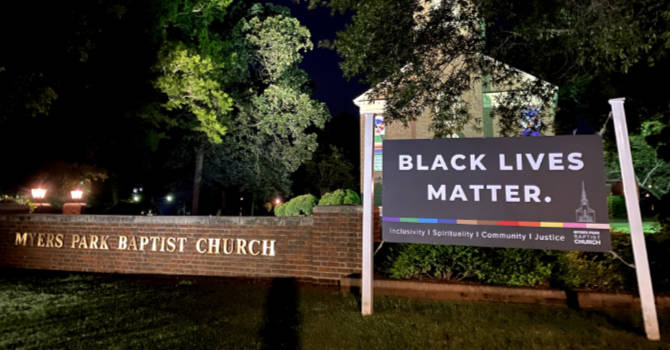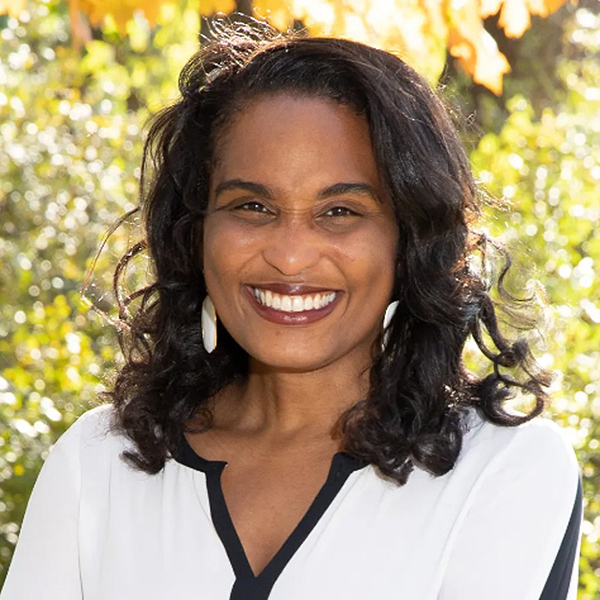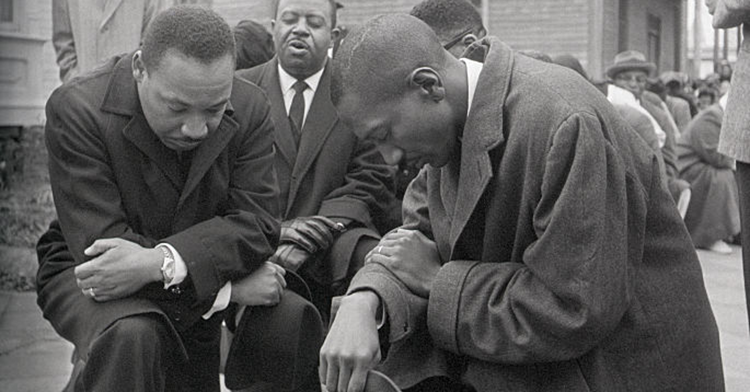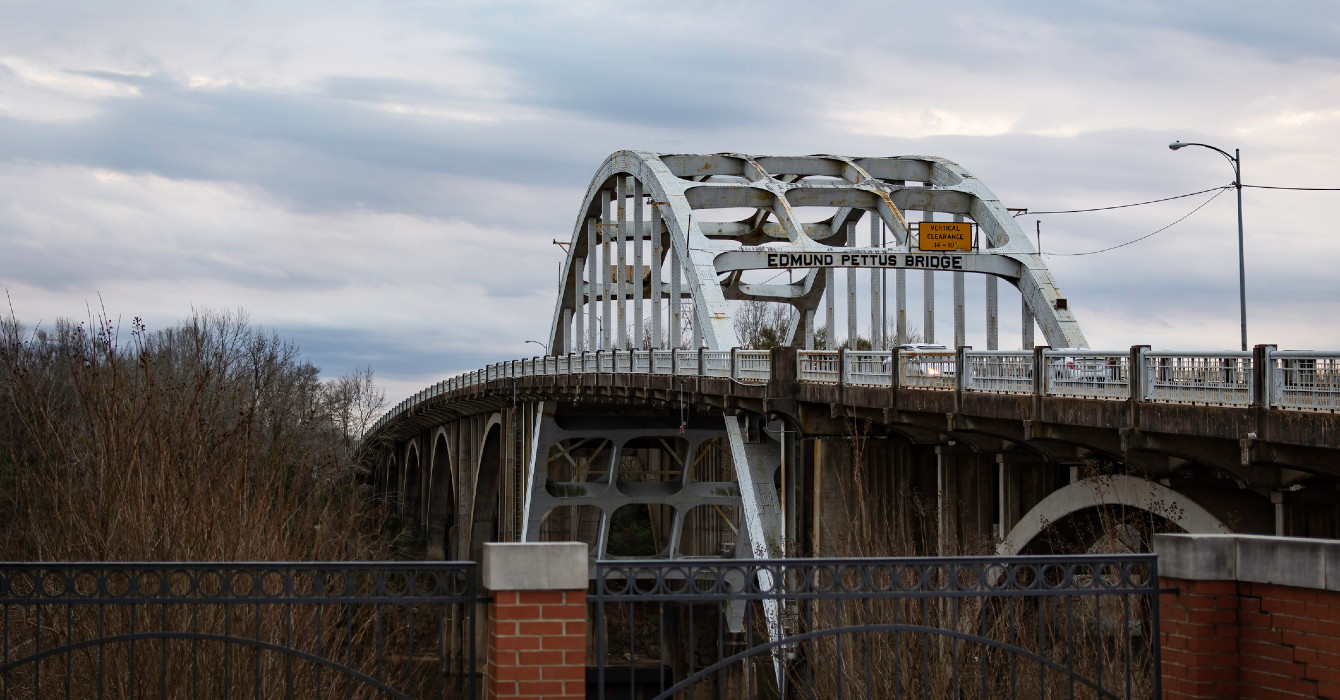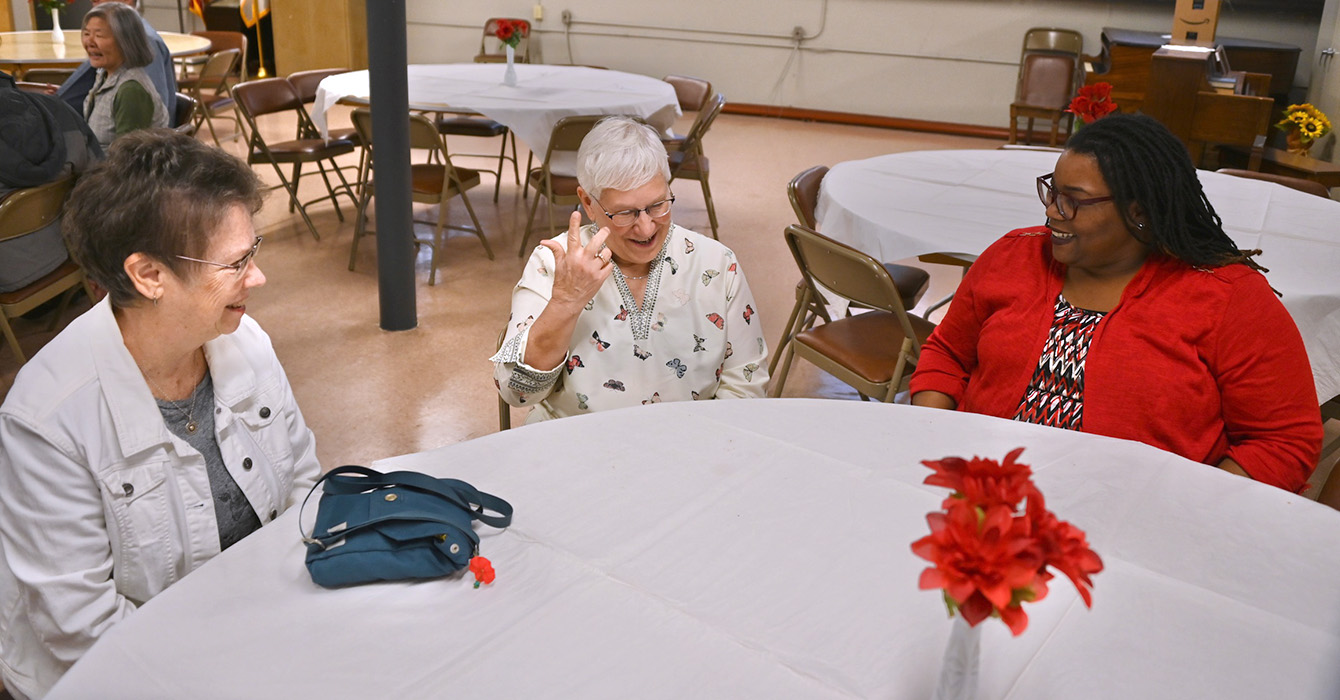Bob Thomason sometimes wonders how he lived almost seven decades before learning of the iconic author James Baldwin.

Wikimedia /
Allan Warren
Recognized for his searing explorations of race and racism in the United States, Baldwin wrote “The Fire Next Time,” among other works.
“How do you get to be 67 years old and not know who this great thinker -- hero, really -- was? But I’m a white man, and I wasn’t taught [Baldwin’s work] when I went to school,” said the former banker and now aviation executive who still lives in his hometown of Charlotte, North Carolina.
White people can choose to ignore racism. If you are white, when did you realize the importance of understanding the experience of Black people in your community?
“His books weren’t on the TV I watched, in the magazines I read,” Thomason said. “And honestly, as a white man, race wasn’t top and center for me.”
Thomason was introduced to “The Fire Next Time” in a program at the church he’s attended all his life, Charlotte’s Myers Park Baptist.
The book was the first and foundational reading for a seven-week program called What Does it Mean to Be White? designed by the congregation’s senior pastor, the Rev. Dr. Benjamin Boswell.

Photo by Sarah Tatum
Boswell, who is the father of an adopted Black daughter, created the program in 2020 partly to help white people understand the surge of police killings of Black people and the persistence of prejudice. But more to the point, he saw the need for white people to understand their own identities.
The Duke Divinity School graduate, 40, launched a pilot of the program as part of his own personal quest and doctoral studies at St. Paul School of Theology. The curriculum is slated to be published by Upper Room Books, and other congregations in the Alliance of Baptists may adopt it.
“I started going on a long, deep dive of reading everything I could on whiteness. I’m reading every book I could possibly find and thinking, ‘How do I translate this for the church?’” Boswell said.
Beyond preaching sermons and attending protests, what can white pastors do to lead white congregations to grapple with the impact of whiteness?
James Weldon Johnson, the author and diplomat and first Black executive secretary of the NAACP, once said that Black people of this country know and understand white people better than white people know Black people. Or themselves, Boswell said.
So Boswell asked himself, “How do I create a process by which we can read works written by Black authors, creatives and intellectuals who have written about white people for a hundred years [so that] white people are forced to reckon with descriptions of themselves written by Black people?”
A progressive history
Beyond his own beliefs, Boswell was spurred on by Myers Park’s history as a progressive religious community and its reputation for pastoral leadership that actively promotes dialogue about social issues.
The Rev. Carlyle Marney, who led Myers Park during the volatile period of the late 1950s and 1960s, wrote the book “Structures of Prejudice” and vocally supported many civil rights causes.
Decades later, in 2007, after years of friction with its statewide body over various positions on baptism, women in the pulpit and segregation, the church was expelled from the Baptist State Convention of North Carolina for affirming LGBTQ rights.

Still, Myers Park has seen its share of dissent about some of its public stances. Passersby, callers and a few congregation members have complained about its Black Lives Matter banner.
In 2016, soon after Donald Trump’s election and not long after Boswell was hired, a fiery speech from the Rev. Dr. William J. Barber II, former North Carolina NAACP president and leader of the Moral Mondays movement, indicted the president-elect in a talk at the church -- in much the same language as a white speaker who had previously denounced Trump.
Barber’s speech raised hackles that the white speaker’s hadn’t, said Boswell. In a contentious meeting where church leadership fielded complaints about Barber’s comments, a sole deacon stood up and said that the only difference was race.
That moment was pivotal. Boswell saw that there was more work to be done in his church. Only 10% of its congregants are people of color. Although the church was founded in 1943, it didn't welcome its first pastor of color until 2019. Now, two of its five ordained clergy are Black.
Focus on Black writers and thought leaders
More than 200 participants have completed Myers Park’s anti-racism program, including some who don’t attend the church. That’s a small share of its 1,600 members, but Boswell said it reflects the program’s current capacity rather than demand. Each What Does it Mean to Be White? group takes only a dozen people.

The program’s readings include books and other selections from canonical Black writers and thought leaders such as Baldwin, Toni Morrison, bell hooks and Malcolm X, as well as legal scholars and theologians. One unit includes articles by Yale Divinity School professor Willie James Jennings, along with the Rev. Kelly Brown Douglas’ “What Does Jesus Have to Do with Whiteness?”
What is shaping your imagination? What books have you read lately? What books do you recommend to others?
Films such as “Fruitvale Station,” about the 2009 police killing of 22-year-old Oscar Grant in Oakland, California, and “13th,” Ava DuVernay’s documentary about the rise of mass incarceration, are also on the syllabus.
Attendees write a “racial autobiography” at the program’s outset. That helps them think through how whiteness has operated in their lives, in both obvious and stealthy ways. Its goal is to get white people thinking about the invisibility of this identity. Being white is often considered the norm or racial baseline, with people of color seen as “the other.”
The content isn’t easy, on multiple levels. A seminal 1993 Harvard Law Review article by Cheryl Harris, now a professor of civil rights and civil liberties at UCLA Law, introduces the idea of whiteness as property.
Whiteness, Harris wrote, is partly an enhanced ability to accumulate wealth and material items through the dispossession of others. It shares a logic with the law and practice of property holding in U.S. history -- throughout much of which property has conferred citizenship, voting rights and other privileges. Whiteness works this way, too.
But the difficulty of the Myers Park program extends beyond its theoretically dense readings. The first question of each week’s group video discussion is, “How did these readings make you feel?” The deceptively simple query demands that participants juggle emotion, unfamiliar facts, perspectives and texts that challenge their notions of history and self.

Wikimedia /
Marion S. Trikosko
One week’s unit probes the topic “whiteness as evil” and features Malcolm X readings using terms such as “white devils” and “race of devils.” Some of the works are more subtle, but they all constitute a confrontation of sorts.
Charlotte attorney Tara Harris, 43, uses water metaphors to describe her journey in the program. She joined a group last summer, soon after George Floyd’s killing by Minneapolis police.
The tumultuous aftermath of Floyd’s death brought many people to the program. Harris had been trying to do self-study about racial issues and justice but saw this as a way to accelerate her learning and do so communally.
“Racism is the water”
“I had thought of racism like a shark in the ocean and this scary thing that could bite you,” she said. “Then, all of a sudden, it occurred to me that racism is the water. It’s everywhere.”
Taking the plunge to discuss whiteness, race and racism in ways she hadn’t before felt like “I was a really bad swimmer who had sort of been cast out into the deep end of the ocean and was barely swimming to get by,” she said.
How does whiteness define your community, and what continues to reinforce the power of white culture? How does Christian witness confront whiteness?
“I don’t want this to be one of those things like, ‘Oh, white people always say [learning to be anti-racist] is so hard.’ Yes, it was hard. But it needed to be hard. That was important,” Harris said.
Thomason knows the struggle well, as participant and now as one of 25 graduate facilitators. His new crop meets weekly via Zoom.
“This is a pretty receptive audience. Now, that said, there’s a lot of emotion in [the ‘whiteness as evil’ session]. There’s always a little anger and a little pushback, because we don’t like to think of ourselves as evil, or our ancestors. [We want to say,] ‘That’s just the way it was,’” he said.

As a young child during segregation, he and many other white people were taught that etiquette didn’t apply to Black workers; he was admonished for thanking the help. Many years later, he recalls such lessons -- instilled by loved ones -- with a profound sense of shame, he said, and welcomes to chance to talk about these issues and experiences with other white people. He often found himself shocked at the many, frequently deliberate ways that ideas of white superiority were systemically built into the law, religion, the arts and almost every aspect of American life.
What Does it Mean to Be White? is specifically for white people. No people of color are in the groups, something that gave educator Lucretia Berry pause at first. Berry, who is Black, owns the Charlotte-based diversity consulting practice Brownicity, which offers customized anti-racist trainings. She’s also a curriculum development specialist and advises the What Does it Mean to Be White? facilitators.
Study and discomfort
“I won’t say I’m a fan [of all-white groups],” she said. “I don’t promote that, but I do understand it. And so when Dr. Boswell came to me and asked me to be accountability partner for this group, I said, ‘It’s very difficult to learn as much as possible when you’re in an affinity group [of people like you].’”
But she ultimately signed on, because “the goal is for white people to be vulnerable and transparent and not look to people of color to do the heavy lifting.”
Who should be doing the “heavy lifting” of leading conversations about racism and privilege? What is the burden Black people experience in such conversations?
She noted how difficult it is for Americans of all racial and ethnic backgrounds to talk about race, even in environments committed to just those conversations.
“I wasn’t exposed to intersectionality or critical race theory until I was getting a doctorate. And I was taking courses specifically in anti-racism education,” Berry said.
“So I tell people who are at the beginning [of thinking about racism] that you can’t even begin to understand structural racism or, for example, the difference between equity and equality” without committed study and a willingness to linger in discomfort, she said.
One of the key challenges for anti-racist trainings is how to harness emotion productively, said racial and gender justice organizer Kari Points.

A self-described “liberation facilitator” based in Durham, North Carolina. Points co-founded Finding Freedom, a multiweek program for white women to examine how they are affected simultaneously by white privilege and gender disadvantage. The program is not affiliated with Myers Park.
“Shame is not a motivator,” Points said. In fact, it’s often quite the opposite: a recipe for inertia.
What white people need is to look each other in the eye and tell each other, with honesty and firmness, that they can do better, she said.
The best anti-racism programs do “remedial” education “to get white people to a place where we can show up in multiracial organizing spaces and be constructively humble -- not always asking for permission or approval, but also not needing a lot of attention or time” or to be centered, she said.
As Points sees it, that remedial process -- in which white people consider how they are invested in racism and then how to subvert it -- is an individual, collective and institutional project that can’t be divorced from social or political action.
Next steps
The Myers Park program, for its part, doesn’t push participants to take any particular social or political action.
But both Tara Harris and Thomason are working hard to dismantle the racial tics of their upbringings and environments. They’ve each taken steps to translate their learning into action.
What actions are you taking because of your understanding of the impact of racism on your community?
Harris recently drove her 11-year-old daughter to her hometown of Greenwood, South Carolina -- infamous for its 1898 “Phoenix riot,” sparked by Black efforts to resist voting disenfranchisement. The two had a car talk about the town’s history and how to make a better future.
When asked whether her two children could be featured in a brochure for a school yoga program, Harris noted that no children of color were being included and took up the matter with the school.
Thomason had already moved his family’s nest egg to a Black-owned bank, and when the police shooting of Black motorist Keith Lamont Scott inflamed Charlotte in 2016, he asked Boswell to recommend a protest he could attend. And he went. But he still had a lot of room to grow.
Now that he has completed the program and absorbed its training, Thomason watches how participants -- those raised in the North, those with slave-owner ancestors like him, self-avowed progressives -- have racist beliefs to untangle. And he has been particularly surprised that younger people who didn’t grow up under Jim Crow have bias he thought belonged to older generations.
“I was hoping personally for just a deeper understanding of the issue of race in America,” Thomason said of his goals in taking part.
“How is it that I’ve lived all these decades and it still looks like the 1960s, you know, riots on TV, etc.? I wanted to understand that one,” he said. “And then I wanted to understand what, if anything, I could do or people like me could do to make the situation better. I mean, I want to die seeing racism go away.”
Questions to consider
Questions to consider
- White people can choose to ignore racism. If you are white, when did you realize the importance of understanding the experience of Black people in your community?
- Beyond preaching sermons and attending protests, what can white pastors do to lead white congregations to grapple with the impact of whiteness?
- What is shaping your imagination? What books have you read lately? What books do you recommend to others?
- How does whiteness define your community, and what continues to reinforce the power of white culture? How does Christian witness confront whiteness?
- Who should be doing the “heavy lifting” of leading conversations about racism and privilege? What is the burden Black people experience in such conversations?
- What actions are you taking because of your understanding of the impact of racism on your community?

